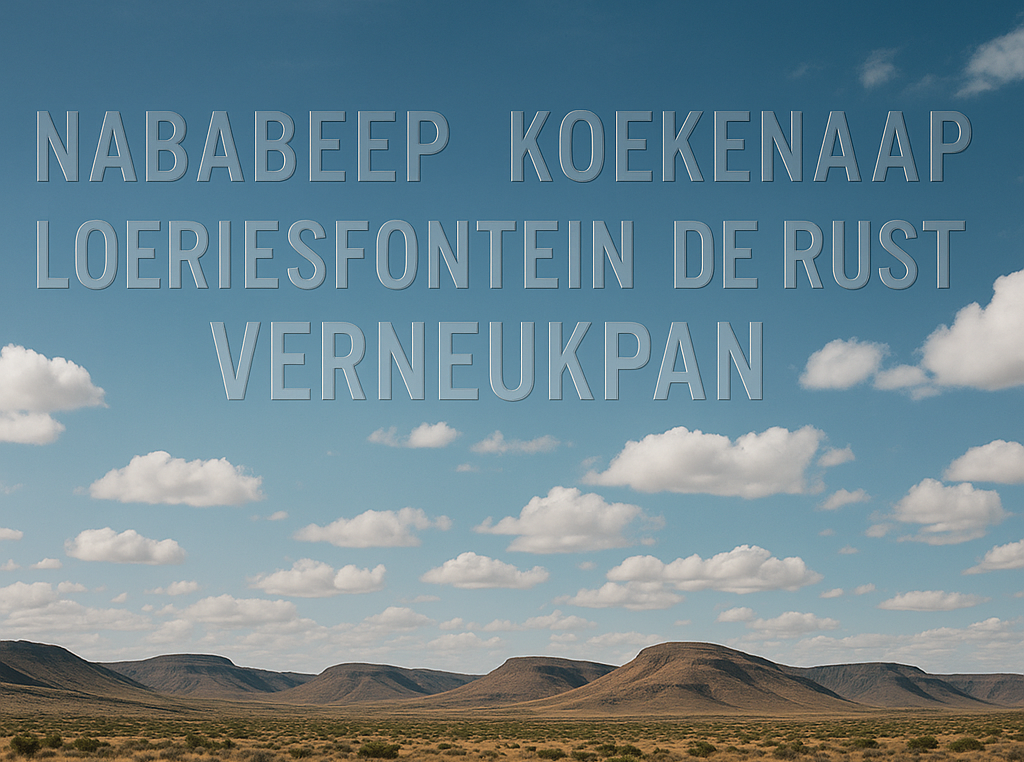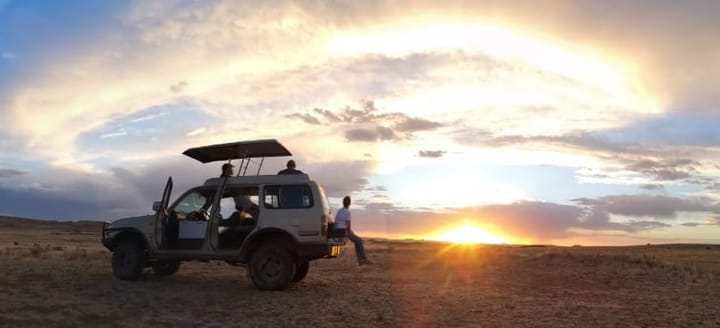The poetry of place names
These names stitch the Karoo’s past to its present and bind heritage to its geography.


Have you ever driven through the endless Karoo and caught yourself wondering about the unique names on the roadside drifting by?
There is a special lyricism in the way the Karoo names itself. Bitterfontein, Soutpan, Leeu-Gamka: travelling through the Karoo is poetic, each toponym a line shaped by the land’s long conversation with those who walked it before.
The land as lexicon
The Karoo has always spoken in elemental terms. Early Khoisan names captured the sound of what they knew best: water, wind, and game.
Words like !Gariep, meaning “great river”, or //Khara Hais, “place of the green water,” reflected a land read through scarcity. Naming a spring or river marked life itself.
When the Dutch trekkers arrived, they translated what they saw into Afrikaans: Bitterfontein, “bitter spring,” Soutpan, “salt pan,” Droë Rivier, “dry river.” The markers remained, but the voice shifted.
Even now, these names act like small weather reports. They tell you where the earth gives or withholds, where cattle may graze and where they will move on.
Their mood is stoic and matter-of-fact but tinged with irony. A place called Verlatenkloof (desolate gorge) or Skilpadfontein (tortoise spring) does not pretend to be more than it is, but holds a dignity born of blunt honesty.
Echoes of origin
Many of the Karoo’s older names are fragments of Khoekhoegowab and San speech, worn smooth by centuries of translation.
The !Karusa (meaning “land of thirst”) is thought to be the root from which “Karoo” itself evolved. It is a word that still feels right on the tongue, its dryness audible.
Other names carry subtle hybrids: Gamka, from the Khoekhoe xami, meaning lion; Outeniqua, “those who bear honey”; Kagga Kamma, thought to refer to a place of stones.
These are words born by the physical act of living close to the land: marking its animals and following its waterlines.
Language, in this way, became the first kind of mapping. Long before surveyors drew lines on paper, the Khoisan and later the pastoral farmers mapped through memory.
A mountain was a landmark but also an ancestor. A spring was a promise renewed with every season. To speak a name was to recall a lineage of experience through hunting paths and grazing routes, and the sound of rain hitting calcrete.
The imagery of Afrikaans names
Afrikaans captures a special poetry when set against the Karoo’s backdrop. It is a language that names what it sees and captures emotion through understatement.
Take Bitterfontein - it doesn’t merely tell you that the water tastes bitter, but that the promise of sweetness has been tested. Soutpan gleams white and dry under the sun, the name itself crisp and brittle. Klipheuwel (stone hill) could be anywhere, but in the Karoo it feels monumental, a still point in the expanse.
There’s a precision in this naming, and a beauty in its accuracy. Even the humorous or ironic names - Blikkiesdorp, Hardap, Dwaalboom - have a shrug of acceptance that feels deeply local. Plain as they may seem, these words are saturated with atmosphere. You can almost smell the resin of the renosterbos and feel the temperature shift as the sun dips.
Naming as memory
Names are the Karoo’s way of remembering itself. A farm called Eenzaamheid (loneliness) may long have changed hands, but the name still tells of the emotional landscape its first owners inhabited, the vastness and solitude and the strange comfort in both. These names stitch the Karoo’s past to its present and bind heritage to its geography.
The mood of the map
Read a Karoo map and it begins to sound like a poem. Nababeep, Koekenaap, Loeriesfontein, De Rust, Verneukpan. The vowels open like valleys and the consonants crack like dry earth.
In a sense, each toponym is a stanza. Bitterfontein and Soutpan are the minor chords, Eenzaamheid the pause, Weltevreden the brief lift of melody before the silence stretches again. The Karoo murmurs and waits for the listener to understand.
Enduring poetry
Driving through the Karoo with attention to its names allows you to realise how deeply language and land entwine. Every hill and pan and farm gate has a word that once meant something immediate: water, shade, hardship, hope. These meanings shift with time, but the poetry is still there.
Perhaps that is why the names of the Karoo feel so alive. Each generation pronounces it anew and each traveller hears it differently. Still the essence holds and the land speaks in its many tongues, telling us who it is.





Comments ()